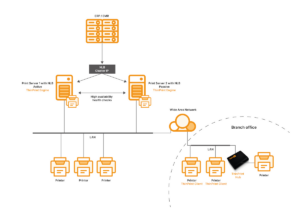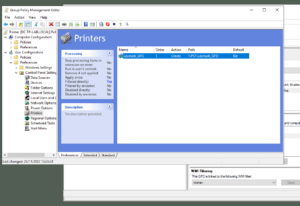How Printing Works in Medical Practices

When medical practices join forces to form joint practices, there are often printing problems.
Time and again, we receive inquiries from doctors’ surgeries, which have joined together to form joint practices. And just like in all other industries, they also want to print. Here too, problems arise when it comes to printing that can be solved with ThinPrint.
In a joint practice in Berlin for example, the affiliated practices are spread over several streets. Employees access their applications via Microsoft Remote Desktop Services. If the employees wanted to print out their reports in PDF format at the end of the day, problems occurred regularly. Slow print jobs resulted in disgruntled employees and overtime. Print jobs took a long time and were often not even printed at all. In some instances, connections even went down. This was a situation that was miserable for employees and had a highly detrimental effect on productivity.
ThinPrint ensures fast print outputs and a punctual end to the day in Berlin medical practices
The solution was found by the joint practice deciding to introduce ThinPrint Engine. The software’s compression and streaming capabilities, i.e. sending print data in individual, small “packages”, have guaranteed fast print outputs from the start. No print job is ever delayed nor do they end up lost. In the individual locations, a ThinPrint Hub is used. This ThinPrint hardware ensures that the printers used in the practice can be instantly connected to the terminal server and easily managed via a management console.
Printer Self Service enables employees to choose their own printers
According to ThinPrint employee Ender Kalender, who helped get the Berlin practices set up, a completely different challenge was found in Hamburg. Here, the joint practices were spread over several different locations throughout the entire city. Unlike their Berlin counterparts, the Hamburg-based group faced the problem of providing employees with the right printers at all times. As Ender Kalender described the situation: “Every time a user logged in, his default printer disappeared.”
For this scenario, the joint practice looked to ThinPrint’s Printer Self Service feature. Via an easy-to-use interface, the staff at the medical offices can simply choose their own printers. They easily select their printers, filtering by printer name, location, or specific print features such as duplex or color. Ender Calendar says: “You take a lot of work off the admins’ hands and keep employees happy.”




